There’s a wide range of tools available for electricians and electrical businesses, but which tools are essential? And which will level-up your business?
In this blog, we explore everything from basic electrician tools, which are great for anyone starting on apprenticeships, to safety and job management tools that enable electrician businesses to look after their team and run smoothly.
Here’s what we cover in the list:
- The basic tools
- Essential tools for modern electrician businesses
- Tools to keep electricians safe
- Tools to keep electricians safe while working at height
- High tech tools for electrician businesses

The basic tools every electrician needs:
Found in every electrician’s tool bag and van, this is the list of basic tools every electrician should be using to complete jobs and keep up with their workload.
1. Pliers
Used to straighten, cut and strip wire. Lineman’s pliers are commonly used by electricians and are found in every tool kit. The main difference between a normal set of pliers and linesman pliers for electricians are the ability to strip wire back. These will also help join two pieces of wire and ductile material together – these are essential.

2. Tape Measure
An electrician will need to be able to accurately measure lengths of wiring before cutting or stripping. A basic measuring tape is another essential tool for an electrician.
3. Electrical Job Management Software
Job Management Software has helped electrical contractors manage their entire business, safely store customer records, simplify job scheduling and speed up quoting and invoicing. No more scribbled down notes, put an end to no shows, or over-complicating field service finances. Electrical Job Management Software pulls everything into one place.
RJ Power Group use Klipboard to gain real time access to their electrical jobs. They can efficiently plan out their engineer’s schedules and give them all the details they need at their fingertips.
Find out more about how job management software can make running a business a breeze.
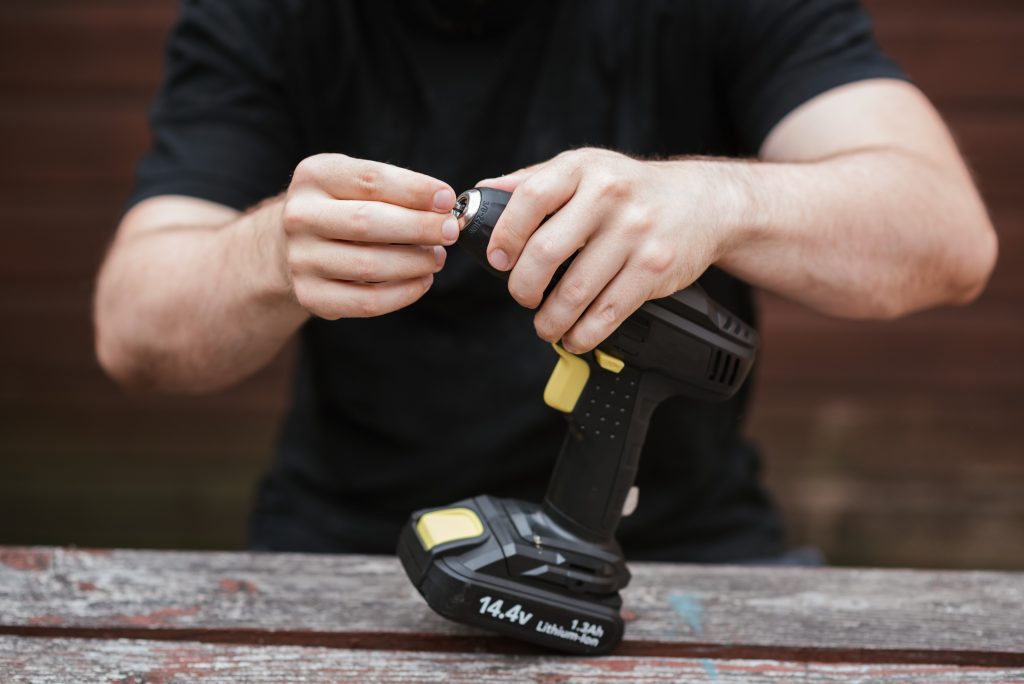
4. Electric Drill
Electricians need to get into tight, hard to reach spaces and a handy electric drill is just the tool they need when accessing hardware or electrical components. Most electricians will opt for a model with speed control and a long life battery.
Top tip: Find a light model as working for several hours with a heavy drill can put a lot of unnecessary strain on an electrician’s wrist.
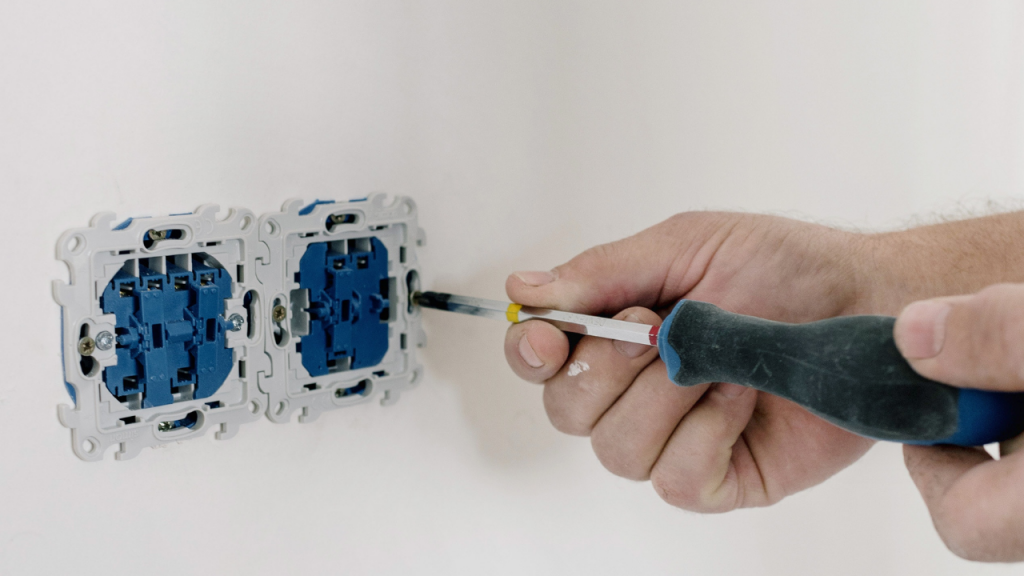
5. Screwdriver
A basic tool but it’s important for electricians to use the correct type of screwdriver. To protect themselves against a nasty shock they need to use one specifically designed for electrical work.
The correct type of screwdriver is an Insulated Screwdriver. These are designed with non-conductive plastic coatings. Only the tip of the screwdriver is exposed meaning the operator is protected from an unexpected live wire of the open circuit.
6. Level
Electricians often need to replace hardware and they know the customer will need perfect placement of electrical sockets and light fittings. They use a Level to make sure everything lines up.
7. Electrical Tape
Electrical tape is an essential item. It has excellent resistance to moisture and corrosion and is often used to insulate electrical wiring and perform minor repairs to damaged wires. Electrical tape comes in various grades depending on how it’s being used for example cold weather tape better adhesion in lower temperatures.
8. Cable Ties
Another item found in every electrician’s tool kit are cable ties. These handy ties also known as zip ties, help electricians fasten electrical cables or wires together. Using them creates a neater, more organised wiring bundle.
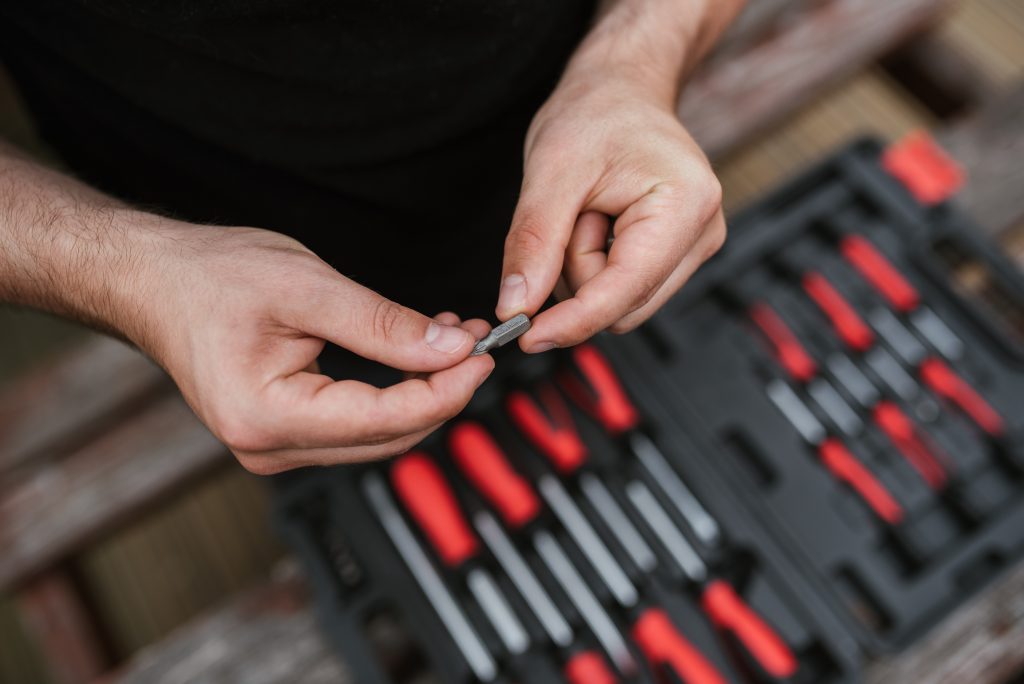
Essential Tools for Modern Electrician Businesses
Here’s is a list of essential tools for the modern electrician, from heavy duty wire shears to tools that allow seamless connection of wiring. Modern electrician businesses are expected to not only create a safe installation or repair of electrical equipment but meet their customers ever-growing demands.
These essential tools help electricians achieve a professional and neat finish.
9. Heavy Duty Cable Cutters
When Linesman Pliers aren’t enough an electrician may opt for Cable Cutters or Shears. These are also insulated to around 10,000 volts and insulated to 1000 AC. They allow the electrician to safely cut cable without crushing it.
10. Fish Tape
If you’ve ever tried to draw a wire from behind a wall or across a ceiling you’ll know how tricky that can be. Fish Tape or Electricians snake as it’s also known helps them draw the cable quickly.
11. Coax Connector
When an electrician needs to link two cables or a cable to a device while also protecting the wire from damage such as shredding they would use a Coax Connector. These handy tools are commonly found in most hardware stores in a variety of cable sizes.
12. Cable Lugs
These are connectors added to the end of cables or wires to allow you to easily connect them to other appliances, surfaces or equipment. These lugs come in three different variants, basic type used on electrical terminals with varying pad widths, type with a sight hole used at a cable intersection and the Connector type which are commonly used with flared or chamfered barrels.
13. Terminal Block
A Terminal block is used to terminate a single wire or connect it to another circuit or system. Electricians use a Terminal Block rather than bonding two wires because its modular design and insulated frame safely secures two wires or more together.
14. Flashlight
Electricians often have to work in poorly lit locations. A flashlight allows them to continue working safely, some may wear a head touch to allow them to continue to use their hands.
15. Reaming Bit
An Electrician may need to widen the size of a pre-existing hole and they do this with a Reaming Bit. It’s a drill bit which leaves a smooth finish and allows for a higher degree of accuracy when they need the right width.
16. Conduit Bender
A Conduit Bender acts as a lever to bend angles in conduit with a measurement guide to achieve the designed angle. This allows electricians to curve conduit to accommodate a route around a wall or hidden space.
17. Splicing Connector
When an electrician needs to quickly and easily connect two or more pieces of wire they may use a splicing connector. They can use these for electrical cables, phone lines and electrical device wiring.
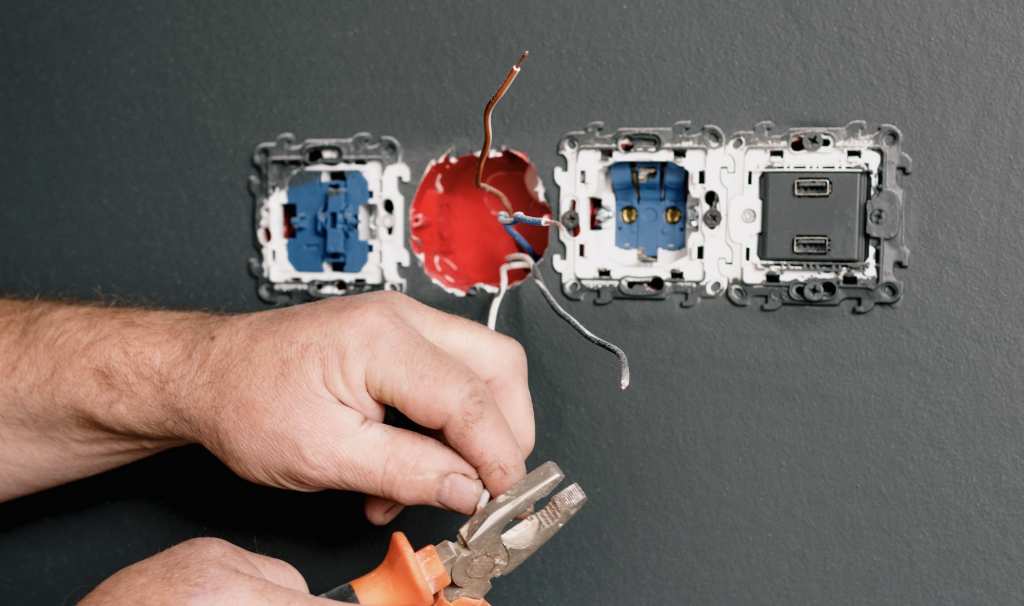
Tools to keep an Electrician Safe
Not all tools on this list are there to improve the efficiency or make a job easier. The following tools are designed to keep electricians safe, the usage of many of these tools are situation dependent and aren’t required for all jobs, but where they are needed they could be lifesaving. For electrician businesses, it’s important to consider the safety of your team across a wide range of potential situations and providing them with the right equipment protects them and your business.
18. Insulated Gloves
Electricians need to protect themselves against the dangerous and powerful currents found in the live wiring, cabling and electrical equipment they work with. Insulated gloves will offer various levels of protection based on the class of equipment. This ranges from 00 protecting up to 500 AC to Class 4 which is approved up to 36,000 AC.
19. Fire Proof clothing
Flame resistant or flame retardant clothing allows electricians to comfortably operate dangerous equipment. These are available in various sizes and grades but all will help prevent serious burns or injuries.
20. Safety Glasses
Safety Glasses are becoming an important part of keeping workers safe. These provide protection to the eyes from dirt, dust and splashed chemicals.
21. Rescue Rod/hook
A rescue hook is used to safely move unconscious people or remove large items or equipment from a hazardous area. Emergency services will first need to protect themselves from an area that could still have an electrical current so they use this equipment to move an individual from the source of the danger.
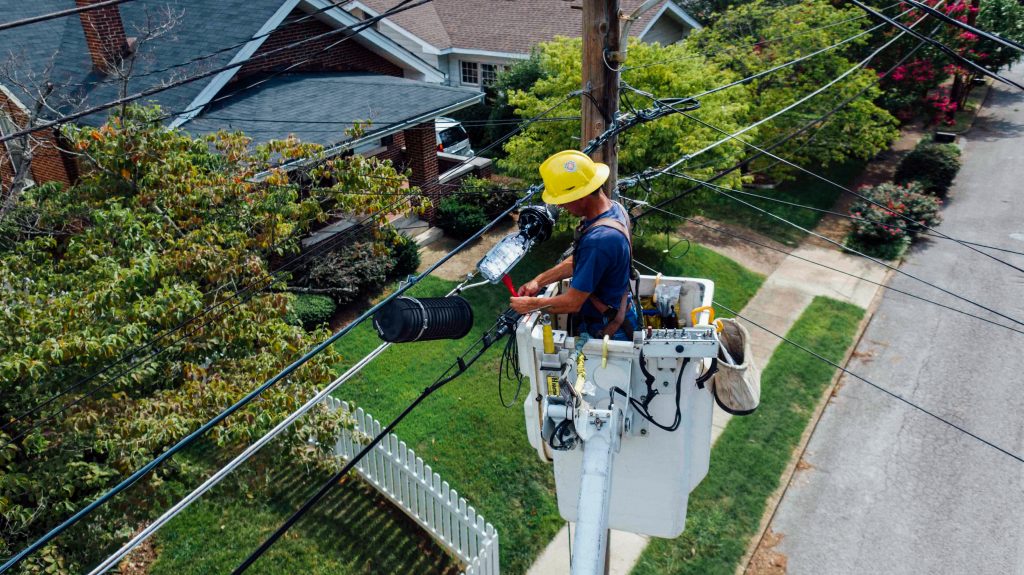
Tools to keep you safe while working at height
When electricians are required to work at height it adds another level of risk that needs to be assessed and specialist equipment can be used to keep electricians safe in these conditions. These tools and equipment help to achieve a safer working environment while working at height.
22. Safety Harness
A safety harness covers the chest, lower and upper body and is designed for people who are working at height. It allows the user to be secured to a cabling or anchor system. These are highly durable and are mandatory on locations where the risk of a fall is high.
23. Fall Arrest Blocks
Fall Arrest Blocks act as shock absorbers when an electrician is working from height and experiences a fall. They allow some slack while working but are designed to reduce a fall when it is detected.
24. Karabiners and Hooks
These hooks are nearly always used with safety equipment when working at height. They act as a secure hook to cabling equipment and can be safely released when needed. Anyone familiar with climbing equipment will have used these clips before.
25. Ladder Wall Anchors
Removable wall anchors allow an electrician to securely fix a ladder to a wall. They attach flush with the wall then using the lever they are able to lock the anchor into position. Moving the lock into the unlock position allows the release of the anchor.
High-tech tools for the modern electrician
This list of tools takes your business to the next level. These more high tech options speed up processes and create a more efficient and effective workforce.
Whether you’re looking to level-up your business through your online presence or streamline your electrician workforce management, it’s worth considering how digital tools can elevate your business. Sign up now to a free trial of Klipboard, to see how easy it is to manage your electrician business with a tool that covers everything from invoicing to team management.
26. Multimeters
When you need to take a more accurate measurement of currents and voltage you need a Multimeter. These are designed to safely inspect the voltage in electrical equipment and speed up the process of measuring it.
27. Circuit Analyzers
This fancy piece of electrician kit allows them to test AC low-voltage distribution. It speeds up fault finding and allows an accurate measurement of multiple problems on a line. Using this equipment can help avoid electric shocks, electrical fires and identify wear and tear.
28. Circuit Finders
Circuit Finders are small battery operated tools which have two parts, a transmitter and a receiver. They are designed to identify which circuit breaker in a main service panel provides a particular electrical outline or light fixture with power.
29. Quoting and Invoicing Tools
Electrician businesses that have busy schedules and a lot of customers to service, often struggle to find the time to produce great looking quotes and invoices. Quoting and invoicing tools for electricians allow them to focus on the work and let the software handle automated invoicing and producing professional looking, job winning quotes.
Klipboard can simplify your field service accounting by pulling together your job details, quoting and invoicing. Learn more.

30. Mobile Job App
When an electrician needs to clearly view their job schedule and workload they will use Job Management Software.
Klipboard allows you and your team to use a Mobile Job App on their smart phones or tablet devices. This empower electrician businesses to complete more jobs, document details of those jobs while at the location, take images for evidence stored against the job record and get signature sign off from the client.
Here’s our guide to 7 huge benefits of using mobile forms and your smartphone while on the job.

